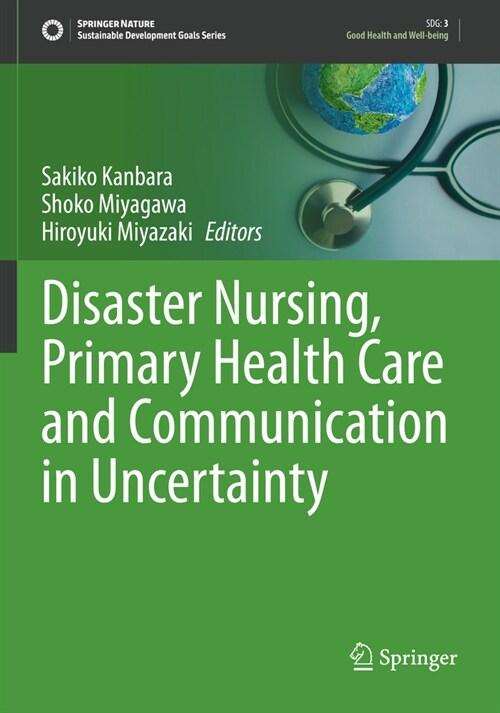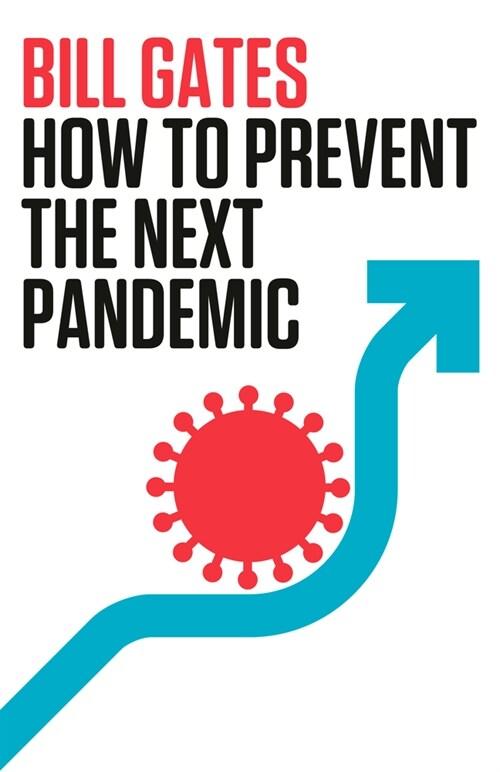책 이미지

책 정보
· 제목 : Disaster Nursing, Primary Health Care and Communication in Uncertainty (Paperback, 2022)
· 분류 : 외국도서 > 의학 > 의료 서비스 > 응급의료 서비스
· ISBN : 9783030982997
· 쪽수 : 346쪽
· 분류 : 외국도서 > 의학 > 의료 서비스 > 응급의료 서비스
· ISBN : 9783030982997
· 쪽수 : 346쪽
목차
PART ONE
Section 1. Introduction to Disaster Nursing
Section 2. Application to disaster Nursing to DRR frameworks
Section 3. Preparedness and Community Resilience by care and nursing
PART TWO
Section 4. Related disciplines and coordination strategies
Section 5. Spatial Information and Geographic Information System
Section 6. Healthcare Service Design (Hiroyuki)
Section 7. Education Development and Instructional Design of capacity development
Section 8. Research in Disaster Nursing
Section 9. Challenges of Disaster Nursing as Human Science
________________________________________
PART ONE
Section 1. Introduction to Disaster Nursing (Sakiko)
Chapter 1 : Disaster as Global Health issue
Rajib Shaw, Sakiko Kanbara
Outline natural, manmade and biohazards, learn global deaths caused by disasters and the impact on public health, learn common disaster health issues, discuss the difference between health emergencies, conflicts, and disaster health, discuss ways to tackle disaster health issues and how disaster health connects not only SDG3 but also other goals.
Sakiko Kanbara
Describe what disaster nursing means and know the extent of the area that disaster nursing deals with or is relevant, based on human security using discussion on DNGL
Chapter 3 : Theory of Disaster Nursing
Sakiko kanbara, Yoko Nakayama, Sayumi Nojima
Describe, predict and explain the phenomenon of disaster nursing, disaster nursing metaparadigm and about the application of existing theories into disaster nursing.
At the end, suggest the meta theory of disaster nursing on primary health care called “care for DRR”on Human Security
Chapter 4 : Disaster Nursing in Japan, 1995-2015
Sonoe Mashino
Know the timeline of disaster nursing evolution and disaster nursing activities in Japan, with Asian country and Nursing Science
Chapter 5 : Achievements so far and Expectation to future
Hiroko Minami
“Message to the Next Generation - Learn from Nurses Around the World on Disaster” at WCDRR 2015
Chapter 6 : International Council of Nurses (ICN) competencies for Disaster Nursing
Aiko Yamamoto
New list the ICN Core Competencies in Disaster Nursing Version 2.0
Chapter 7 : Case study (500-1000 words / 1case)
(Sushila to secretariat)
Show the stories how disaster nursing evolved in each country:
2002- Hongkong (SARS outbreak): Sunshine Chain
2003- Iran (Bam Earthquake) :
2004 - Indonesia (Sumatra Tsunami): Chadra Eni,
2008 - China(Sichuan Earthquake): Hu Qin
2013- Philippine (Typhoon Haiyan) :
2013- Congo (Ebora outbreak) :2015- Nepal (Nepal Earthquake): Sharada
Section 2. Application to disaster Nursing to DRR frameworks (Sakiko)
Chapter 8 : Sendai Framework and Bangkok Principles for Nurses
Sakiko Kanbara, Hanae Miura, Aiko Yamamoto, Wakana Ozawa, MIe Naiki, Hiroko Minami,
Learn a global roadmap about DRR and health security and implementation by nurse from the health aspects of the Sendai Framework.
Chapter 9 : Goals and Output indicator of Sustainable community
Ngatu Rogers, Odeda Benin-Goren,
Explain the standardized, primary screening and assessment tool of health status
during emergency given by the WHO: Minimum Data Set version 1.0, and how to make the indicator streamline for sustainable community
Chapter10 : National and Global coordination, Sphere standard, cluster approach
Mari Kinoshita, Ngatu Rogers
Know the principles and minimum standards in a coordinated humanitarian response, helped in coordination, stakeholder communication, resource mobilization and movement.
Chapter 11 : Leading organizations working for DRR and Health
Shoko Miyagawa, MieNaiki, Myojo , Ueshima, Archana Shresta
Chapter 12 : Healthcare needs at times of disaster, Ethnographic approach
Hyon-ju Lee
Discuss health needs of peoples with different cultures, language, customs,
habits, and mutual differences.
Chapter 13 : Healthcare needs at times of disaster, Epidemiological approach
Tomohiro Matsuda
Learn basic and advance epidemiological approach, and how to change the mind for broader perspective in chaos community, example of innovative idea of future research to achieve SFDRR and SDGs
Section 3. Preparedness and Community Resilience from nursing context (Sakiko)
Chapter 14 : Nurses’ roles and preparedness in changing disaster risk and social contexts
Megumi Fujii, Marina Inagaki, Kosuke Sasaki, Shigeru Miyamae, Akihiro Sakai, Kengo Kobayashi
Discuss the evolving roles of nurses on disaster, focused on how to reduce disaster related death, and secure health in community Chapter 15 : Nursing visualization in primary health care for DRR
Hastoro Dwinantoaji, Yuko Fushimi, Junko Miyamoto
Learn about the Primary Health Care, bottom-up approach, information
management, multi-professional Cooperation in relation to disasters including
climate change for human security and Sustainable Development Goals
Chapter 16 : Community resilience
Odeya Cohen, Limor aharonson-daniel, Noriko Hatakeyama
Describe community resilience and community-based DRR, the community resilience model, ways to improve community resilience during disasters, and describe the roles of nurses for community resilience
Chapter 17 : Case study; Introduction to EpiNurse
Apsara Pandey, Archana Shresta Joshi, Uttam Poudel, Sharada Barakoti, Tara Pokharel
Understand EpiNurse and visualization of EpiNurse Information, know the
activities/role of EpiNurse in disaster phases
Chapter 18 : Case study, COVID-19 (500-1000 words / 1case)
Show the stories how disaster nursing adopted in each country to COVID-19 response
Craig Van Dyke, Gretchen Kalonji (introduction)
Hu Qin(China)
Maurice Yap (Hong Kong)
Shoshy Goldberg (Israel)
Parvati Bista, Archana Joshi (Nepal)
Rini Damayanti (Bali, Indonesia)
Shigeru Miyamae(Japan)
Sheila Bonito (Philippines)
TBD (ICN ,Nursing Now!)
PART TWO
Chapter 19 : Risk-Informed/ System-based approach decision making
Shoko Miyagawa, Ma. Regina Estuar, Sachiko Ohta, Sakiko Kanbara
Understand what information is and why information is needed for decision making.It provides an overview of the theory of information and uncertainty and the use of traditional information systems in management science. This is followed by a discussion of the use of information in disaster response, which requires dealing with a high level of uncertainty.
Chapter 20 : ICT,Human and Humanitarian Network on Disaster Nursing Model
Yasuhiro Ishimine, Wakana Ozawa, Satoru Yamada
Clarify stakeholders, organize information flow and understand what kind of collaboration is needed among government, medical, and private sectors to solve challenges of complex coordination and collaboration for relief activities to support better decision-making in disaster relief.
Chapter 21 : ICT for decision making in disaster relief
Sachiko Ohta, Tadashi Okamoto Naonori Kato, Megumi Fujii
My timeline, “Personal Life Records” is a chronological household evacuation plan which includes: when to evacuate, who to evacuate, what to care after evacuation. as the 2018 Western Japan floods have served as reminders of the importance of caregiver evacuation preparedness in Japan
Chapter 22 : Data base, Data exchange, commons, data security and types of information to keep in a database
Ma. Regina Esture, Shoko Miyagawa, Sachiko Ohta, Hiroyuki, Miyazaki
Outline the medical data storage and usage situation in Japan based on the problems faced when using medical data, and point out that non-medical data, such as lifestyle and hygiene information, are necessary to protect the health of disaster victims in times of disaster, and explains the necessity of constructing such a database.
Section 5. Spatial Information and Geographic Information System (Hiroyuki)
Chapter 23 : GIS
Hiroyuki Miyazaki, Cristian, Yuki Akiyama, Daichi Furuhashi, Jeff Higgins
Understand the functionality of GIS focusing on disaster nursing operations, comprising 1) data acquisition, 2) data analysis, and 3) data visualization. The reader will understand the conceptual basics of GIS, useful for designing GIS-based information management systems and applications. The section will also include some good practices of projects, software, and operations, which will be worthwhile for beginners to follow. By reading and understanding this section, the readers will initiate GIS applications fitting to their projects and activities.
Section 6. Health Care Service Design (Hiroyuki)
Chapter 24 : Healthcare Service Design
Hiroyuki Miyazaki, Shoko Miyagawa
This section will provide the basics of Service design, such as Customer Value Chain Analysis (CVCA), and demonstrations to the fields of disaster nursing. By reading and understanding the section, the readers will be able to apply service design methods to analyze issues and problems in their disaster nursing fields in sustainable community .
Chapter 25 : Case Studies of ICT/GIS and Disaster Nursing (500-1000 words / 1case)
Hiranya Sritart,Takashi Hara
Visualization of Shelter Health : Show the method of participatory monitoring of shelter health and healthcare procedures through information gathering and relay from disaster hit areas to the relevant health actors.
Ma. Regina Esture
Show the stories how ICT utilized by disaster nursing response
SHEREPO-Kochi (Hiramoto, Japan)
SHINEOS+Nepal model (Regina Nepal)
Ebayanihan Hazard visualisation (ReginaExForm)
KLL collect (Nirab)
ITDART for Health (Shoko)
MABI CARE(Sakiko)
Caring Finder (Sakiko)
Section 7. Education Development and Instructional Design of capacity development (Sakiko)
Chapter 26 : Instructional design for Disaster Risk Reduction
Miyuki Horiuchi, Takujiro Ito
Describe key concepts and how to design effective training programs to Nurses for Disaster Risk Reduction.Chapter 27 : Case study: Nepal Earthquake and school nursing
Sushila Paudel
Know the importance, roles and activities of school nursing with Nepal earthquake 2015 as case study.
Chapter 28 : Monitoring and Evaluation
Muneyoshi Numdada, Tomoyuki Sowa, Miho Morosawa
Know how should to evaluate and monitoring health and achievement of nurse, and how to expect social business according to utilization of nursing and positioning on Disaster preparedness as well as disaster response and recovery by local nurses, in global health
Section 8. Research in Disaster Nursing (Sakiko)
Chapter 29 : Research of Disaster Nursing
Satoru Yamada, Maki Nakajima
Discuss the achievements, challenges and the education and research
Chapter 30 : Case study: Delphi Study in Japan 2010 & 2020
Sakiko Kanbara, Sigeru Miyamae, Hanae Miura, Wakana Ozawa, Aiko Yamamoto, Hiroko Minami
Show the result and discuss the research priority
Section 9. Challenges of Disaster Nursing as Human Science (Sakiko)
Chapter 31 : Challenges in Nursing profession
Sakiko Kanbara,Yudi Adiesta Chandra, Akiko Sakai, Ogochol Lee,
Discuss the problems and barriers faced in relation to the philosophical, biological, social, and cultural aspects of human life during disasters.
Discuss the Physical, mental health issues, security and support system
Discuss the issues on resources for deploying organizations.
Discuss the ethical issues in health care during emergencies.
Coordination challenges Chapter 32 : Challenges in Education and Research
Noriko Katada
Discuss about the lack of educational institutes, knowledge and skills.
Ethical issues in disaster nursing research,
추천도서
분야의 베스트셀러 >






















